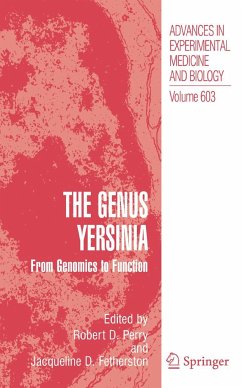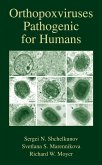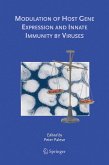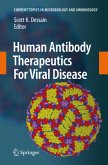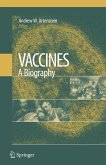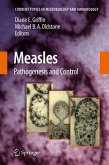Robert D. Perry / Jacqueline D. Fetherson (eds.)From Genomics to Function
The Genus Yersinia:
From Genomics to Function
Herausgegeben:Perry, Robert D.; Fetherston, Jacqueline D.
Robert D. Perry / Jacqueline D. Fetherson (eds.)From Genomics to Function
The Genus Yersinia:
From Genomics to Function
Herausgegeben:Perry, Robert D.; Fetherston, Jacqueline D.
- Gebundenes Buch
- Merkliste
- Auf die Merkliste
- Bewerten Bewerten
- Teilen
- Produkt teilen
- Produkterinnerung
- Produkterinnerung
The 9th International Symposium on Yersinia was held in Lexington, Kentucky, USA on October 10-14, 2006. Over 250 Yersinia researchers from 18 countries gathered to present and discuss their research. In addition to 37 oral presentations, there were 150 poster presentations. This Symposium volume is based on selected presentations from the meeting and contains both reviews and research articles. It is divided into six topic areas: 1) genomics; 2) structure and metabolism; 3) regulatory mechanisms; 4) pathogenesis and host interactions; 5) molecular epidemiology and detection; and 6) vaccine…mehr
Andere Kunden interessierten sich auch für
![Orthopoxviruses Pathogenic for Humans Orthopoxviruses Pathogenic for Humans]() Orthopoxviruses Pathogenic for Humans112,99 €
Orthopoxviruses Pathogenic for Humans112,99 €![Modulation of Host Gene Expression and Innate Immunity by Viruses Modulation of Host Gene Expression and Innate Immunity by Viruses]() Jean-Pierre Changeux (Volume ed.)Modulation of Host Gene Expression and Innate Immunity by Viruses186,99 €
Jean-Pierre Changeux (Volume ed.)Modulation of Host Gene Expression and Innate Immunity by Viruses186,99 €![Antimicrobial Resistance in Developing Countries Antimicrobial Resistance in Developing Countries]() Aníbal de J. Sosa / Denis K. Byarugaba / Carlos F. et al. Amábile-Cuevas (Hrsg.)Antimicrobial Resistance in Developing Countries112,99 €
Aníbal de J. Sosa / Denis K. Byarugaba / Carlos F. et al. Amábile-Cuevas (Hrsg.)Antimicrobial Resistance in Developing Countries112,99 €![The Role of Vitamins in Combating Infectious Viral Diseases The Role of Vitamins in Combating Infectious Viral Diseases]() The Role of Vitamins in Combating Infectious Viral Diseases153,99 €
The Role of Vitamins in Combating Infectious Viral Diseases153,99 €![Human Antibody Therapeutics For Viral Disease Human Antibody Therapeutics For Viral Disease]() Human Antibody Therapeutics For Viral Disease112,99 €
Human Antibody Therapeutics For Viral Disease112,99 €![Vaccines: A Biography Vaccines: A Biography]() Vaccines: A Biography186,99 €
Vaccines: A Biography186,99 €![Measles Measles]() Measles149,99 €
Measles149,99 €-
-
-
The 9th International Symposium on Yersinia was held in Lexington, Kentucky, USA on October 10-14, 2006. Over 250 Yersinia researchers from 18 countries gathered to present and discuss their research. In addition to 37 oral presentations, there were 150 poster presentations. This Symposium volume is based on selected presentations from the meeting and contains both reviews and research articles. It is divided into six topic areas: 1) genomics; 2) structure and metabolism; 3) regulatory mechanisms; 4) pathogenesis and host interactions; 5) molecular epidemiology and detection; and 6) vaccine and antimicrobial therapy development. Consequently, this volume covers a wide range of current research areas in the Yersinia field.
Produktdetails
- Produktdetails
- Advances in Experimental Medicine and Biology 603
- Verlag: Springer / Springer New York / Springer, Berlin
- Artikelnr. des Verlages: 11824817, 978-0-387-72123-1
- 2007 edition
- Seitenzahl: 429
- Erscheinungstermin: 25. September 2007
- Englisch
- Abmessung: 243mm x 159mm x 24mm
- Gewicht: 792g
- ISBN-13: 9780387721231
- ISBN-10: 0387721231
- Artikelnr.: 22923472
- Herstellerkennzeichnung
- Libri GmbH
- Europaallee 1
- 36244 Bad Hersfeld
- gpsr@libri.de
- Advances in Experimental Medicine and Biology 603
- Verlag: Springer / Springer New York / Springer, Berlin
- Artikelnr. des Verlages: 11824817, 978-0-387-72123-1
- 2007 edition
- Seitenzahl: 429
- Erscheinungstermin: 25. September 2007
- Englisch
- Abmessung: 243mm x 159mm x 24mm
- Gewicht: 792g
- ISBN-13: 9780387721231
- ISBN-10: 0387721231
- Artikelnr.: 22923472
- Herstellerkennzeichnung
- Libri GmbH
- Europaallee 1
- 36244 Bad Hersfeld
- gpsr@libri.de
Robert D. Perry, University of Kentucky, Lexington, KY, USA / Jacqueline D. Fetherston, University of Kentucky, Lexington, KY, USA
Genomics.- Comparative Genome Analyses of the Pathogenic Yersiniae Based on the Genome Sequence of Yersinia enterocolitica Strain 8081.- Pestoides F, an Atypical Yersinia pestis Strain from the Former Soviet Union.- Variability of the Protein Sequences of LcrV Between Epidemic and Atypical Rhamnose-Positive Strains of Yersinia pestis.- A New Asset for Pathogen Informatics - the Enteropathogen Resource Integration Center (ERIC), an NIAID Bioinformatics Resource Center for Biodefense and Emerging/Re-emerging Infectious Disease.- Structure and Metabolism.- My Life with Yersinia.- Structure and Assembly of Yersinia pestis F1 Antigen.- Relationship of the Lipopolysaccharide Structure of Yersinia bpestis to Resistance to Antimicrobial Factors.- Characterization of Six Novel Chaperone/Usher Systems in Yersinia pestis.- Polyamines in Bacteria: Pleiotropic Effects yet Specific Mechanisms.- Intermediary Metabolism, Na+, the Low Calcium-Response, and Acute Disease.- Regulatory Mechanisms.- Differential Gene Regulation in Yersinia pestis versus Yersinia pseudotuberculosis: Effects of Hypoxia and Potential Role of a Plasmid Regulator.- Two-Component System Regulon Plasticity in Bacteria: A Concept Emerging from Phenotypic Analysis of Yersinia pseudotuberculosis Response Regulator Mutants.- Regulatory Elements Implicated in the Environmental Control of Invasin Expression in Enteropathogenic Yersinia.- Regulation of the Phage-Shock-Protein Stress Response in Yersinia enterocolitica.- Functional Quorum Sensing Systems Affect Biofilm Formation and Protein Expression in Yersinia pestis.- Analysis of Yersinia pestis Gene Expression in the Flea Vector.- Regulation of Biofilm Formation in Yersinia pestis.- Environmental Stimuli Affecting Expression of the Ysa Type Three Secretion Locus.-Polynucleotide Phosphorylase and the T3SS.- Roles of YopN, LcrG and LcrV in Controlling Yops Secretion by Yersinia pestis.- Identification of TyeA Residues Required to Interact with YopN and to Regulate Yop Secretion.- Pathogenesis and Host Interactions.- The Insect Toxin Complex of Yersinia.- Twin Arginine Translocation in Yersinia.- Using Every Trick in the Book: The Pla Surface Protease of Yersinia pestis.- Invasion and Dissemination of Yersinia enterocolitica in the Mouse Infection Model.- The Ysa Type 3 Secretion System of Yersinia enterocolitica Biovar 1B.- A Rationale for Repression and/or Loss of Motility by Pathogenic Yersinia in the Mammalian Host.- Disparity Between Yersinia pestis and Yersinia enterocolitica O:8 in YopJ/YopP-Dependent Functions.- Molecular Epidemiology and Detection.- 3 IS-RFLP: A Powerful Tool for Geographical Clustering of Global Isolates of Yersinia pestis.- Analysis of the Three Yersinia pestis CRISPR Loci Provides New Tools for Phylogenetic Studies and Possibly for the Investigation of Ancient DNA.- Enrichment of Yersinia pestis from Blood Cultures Enables Rapid Antimicrobial Susceptibility Determination by Flow Cytometry.- Development and Evaluation of a Single Tube Nested PCR Based Approach (STNPCR) for the Diagnosis of Plague.- Vaccine and Antimicrobial Therapy Development.- Therapeutic Potential of Yersinia Anti-Inflammatory Components.- High Throughput Screening for Small-Molecule Inhibitors of Type III Secretion in Yersinia pestis.- Cell-Mediated Defense Against Yersinia pestis Infection.- Oral Vaccination with Different Antigens from Yersinia pestis KIM Delivered by Live Attenuated Salmonella Typhimurium Elicits a Protective Immune Response Against Plague.- Yersinia pestis YadC: A Novel Vaccine Candidate Against Plague.- Protective Immunity Against Plague.
Genomics.- Comparative Genome Analyses of the Pathogenic Yersiniae Based on the Genome Sequence of Yersinia enterocolitica Strain 8081.- Pestoides F, an Atypical Yersinia pestis Strain from the Former Soviet Union.- Variability of the Protein Sequences of LcrV Between Epidemic and Atypical Rhamnose-Positive Strains of Yersinia pestis.- A New Asset for Pathogen Informatics - the Enteropathogen Resource Integration Center (ERIC), an NIAID Bioinformatics Resource Center for Biodefense and Emerging/Re-emerging Infectious Disease.- Structure and Metabolism.- My Life with Yersinia.- Structure and Assembly of Yersinia pestis F1 Antigen.- Relationship of the Lipopolysaccharide Structure of Yersinia bpestis to Resistance to Antimicrobial Factors.- Characterization of Six Novel Chaperone/Usher Systems in Yersinia pestis.- Polyamines in Bacteria: Pleiotropic Effects yet Specific Mechanisms.- Intermediary Metabolism, Na+, the Low Calcium-Response, and Acute Disease.- Regulatory Mechanisms.- Differential Gene Regulation in Yersinia pestis versus Yersinia pseudotuberculosis: Effects of Hypoxia and Potential Role of a Plasmid Regulator.- Two-Component System Regulon Plasticity in Bacteria: A Concept Emerging from Phenotypic Analysis of Yersinia pseudotuberculosis Response Regulator Mutants.- Regulatory Elements Implicated in the Environmental Control of Invasin Expression in Enteropathogenic Yersinia.- Regulation of the Phage-Shock-Protein Stress Response in Yersinia enterocolitica.- Functional Quorum Sensing Systems Affect Biofilm Formation and Protein Expression in Yersinia pestis.- Analysis of Yersinia pestis Gene Expression in the Flea Vector.- Regulation of Biofilm Formation in Yersinia pestis.- Environmental Stimuli Affecting Expression of the Ysa Type Three Secretion Locus.-Polynucleotide Phosphorylase and the T3SS.- Roles of YopN, LcrG and LcrV in Controlling Yops Secretion by Yersinia pestis.- Identification of TyeA Residues Required to Interact with YopN and to Regulate Yop Secretion.- Pathogenesis and Host Interactions.- The Insect Toxin Complex of Yersinia.- Twin Arginine Translocation in Yersinia.- Using Every Trick in the Book: The Pla Surface Protease of Yersinia pestis.- Invasion and Dissemination of Yersinia enterocolitica in the Mouse Infection Model.- The Ysa Type 3 Secretion System of Yersinia enterocolitica Biovar 1B.- A Rationale for Repression and/or Loss of Motility by Pathogenic Yersinia in the Mammalian Host.- Disparity Between Yersinia pestis and Yersinia enterocolitica O:8 in YopJ/YopP-Dependent Functions.- Molecular Epidemiology and Detection.- 3 IS-RFLP: A Powerful Tool for Geographical Clustering of Global Isolates of Yersinia pestis.- Analysis of the Three Yersinia pestis CRISPR Loci Provides New Tools for Phylogenetic Studies and Possibly for the Investigation of Ancient DNA.- Enrichment of Yersinia pestis from Blood Cultures Enables Rapid Antimicrobial Susceptibility Determination by Flow Cytometry.- Development and Evaluation of a Single Tube Nested PCR Based Approach (STNPCR) for the Diagnosis of Plague.- Vaccine and Antimicrobial Therapy Development.- Therapeutic Potential of Yersinia Anti-Inflammatory Components.- High Throughput Screening for Small-Molecule Inhibitors of Type III Secretion in Yersinia pestis.- Cell-Mediated Defense Against Yersinia pestis Infection.- Oral Vaccination with Different Antigens from Yersinia pestis KIM Delivered by Live Attenuated Salmonella Typhimurium Elicits a Protective Immune Response Against Plague.- Yersinia pestis YadC: A Novel Vaccine Candidate Against Plague.- Protective Immunity Against Plague.

